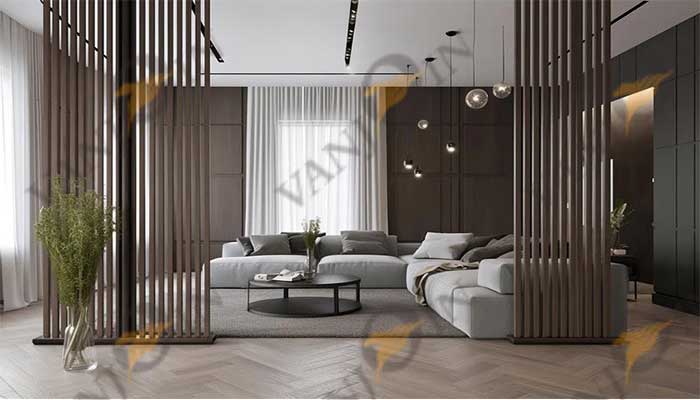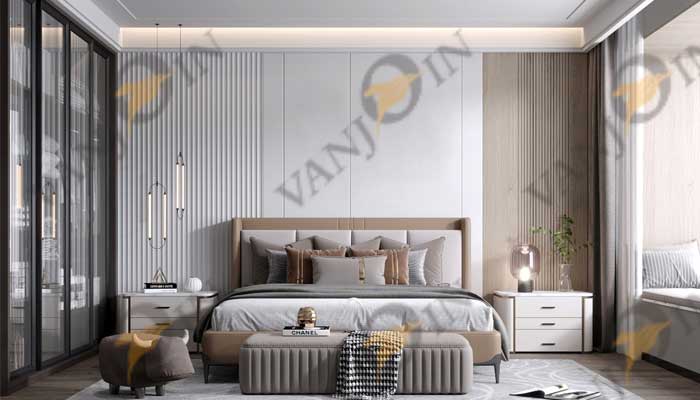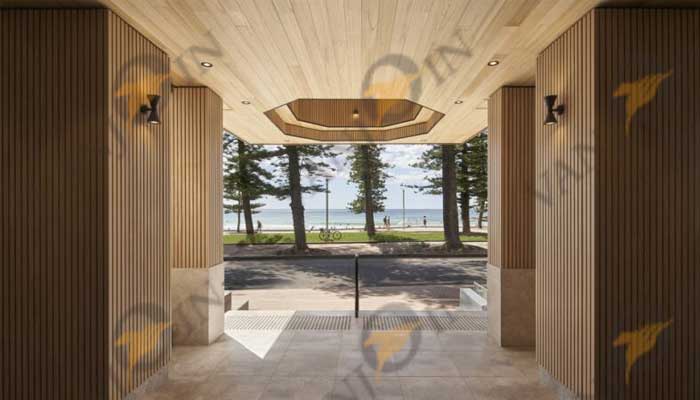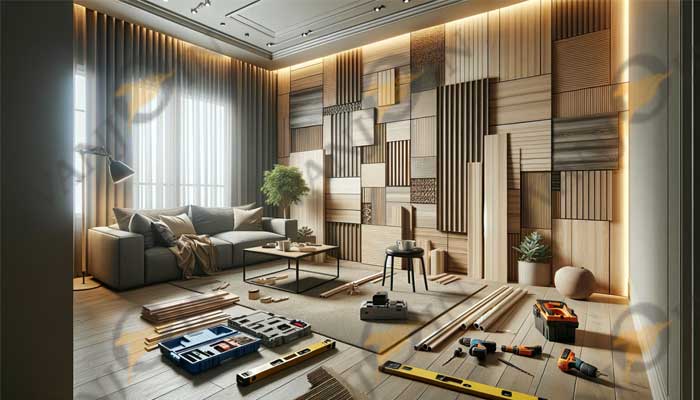Welcome to VANJOIN. Your satisfaction is our biggest pursuit.
Wood panels have been a popular choice for interior wall designs for a long time. This type of wall paneling is cheaper and has a more natural look and texture. However, with the rise in the price of wood and the emergence of new materials, WPC wall panels are becoming the perfect alternative. It has more advantages over traditional wood panels. In this article, we’ll look at the difference between WPC wall panel and wood panel and what makes them unique.

Difference between WPC wall panel and wood panel
WPC wall panels are a new alternative to traditional wood panels, and they offer advantages that traditional wood panels do not. Choosing the right wall paneling material can make a big difference. So look through the following comparisons to find the best paneling for you.
Material and construction
WPC wall paneling is a blend of wood fibers, thermoplastics, and adhesives. The unique composition and construction create a material that combines natural beauty and durability. WPC wall paneling, on the other hand, is composed of natural wood (e.g. softwood and hardwood).
Moisture resistance
One of the main advantages of WPC panels over traditional wood panels is their superior moisture resistance. Traditional timber wood is very susceptible to the effects of moisture, which can cause the panel to swell, warp, and rot.
In contrast, the plastic content of WPC material is very well insulated from moisture and humidity and will not rot or crack due to humidity.
WPC wall panels are an excellent design choice in wet environments such as bathrooms or kitchens. The combination of wood fibers and plastic components creates an effective moisture barrier. This means that even in humid environments WPC materials will not swell or warp. Even in very humid environments, WPC paneling maintains its structural integrity over time.

Durability and longevity
In terms of durability, WPC wall panels are more durable and long-lasting than wood wall panels. As homeowners use them, wood panels are prone to cracking, warping, or fading. Especially in extreme environments.
However, WPC panels have excellent resistance to these problems and you don’t have to worry about damage to the panels even after a long period of use. With WPC wall panels, you can enjoy the aesthetics and practicality they provide for a longer period of time.
Compare the longevity of the two and you’ll find that the WPC material is superior. Even wood panels that are regularly sanded, stained, and maintained can show damage over time. But WPC wall panels not only require less maintenance, but they also last longer. It allows the homeowner to focus more on enjoying the unique atmosphere that WPC panels provide.
Maintenance requirements
As we mentioned above, wood panels require regular care and maintenance to keep them performing and looking great. Regular sanding, sealing, staining, or painting, for example, can be time-consuming and costly.
But WPC interior wall panels require very little maintenance. They don’t need this tedious upkeep and maintenance to ensure the durability of the wall panels. All you have to do is to clean the wall panels regularly using mild detergent and warm water.
Environmental impact
Comparing the environmental impact of the two, WPC materials are more eco-friendly. wood wall panels are made from natural wood, so mass production may lead to waste and depletion of forest resources. WPC paneling is made from recycled plastic. This effectively reduces the need for virgin wood, which is important for the environment.

Design options
WPC wall panels and wood panels are available in a variety of design options.
Wood panels have a natural grain and texture that creates a warm atmosphere in your interior. And it can be stained in a variety of colors to match different interior design styles.
WPC panel is a more versatile option that offers endless possibilities for your interior design. It can mimic the grain and look of natural wood, while also offering a wider range of colors, finishes, and styles.
A variety of design styles can add depth and uniqueness to your room, giving it a more personalized look. WPC wall panels also support customized designs, which can work well for homeowner-specific design requirements.
Cost comparison
Comparing the initial cost of the two, wood wall panels may be cheaper. However, as the price of wood continues to increase, this difference has gradually narrowed down. If you compare their long-term costs, then you will find that WPC panels are more cost-effective.
The cost of maintenance and repairs associated with wood wall panels will continue to increase as they are used over time. But the excellent performance of WPC material eliminates the need for extensive repairs and maintenance. And its longevity eliminates the need for frequent replacement. This makes WPC wall panels a more cost-effective option.

Conclusion
Although wood panels have a unique and natural aesthetic as well as good performance. However, the unique advantages of WPC wall panels make them the perfect alternative. The moisture resistance, durability, low maintenance, and cost-effectiveness of WPC panels far exceed that of traditional wood panels. Its design versatility and multi-functionality make it an excellent choice for interior design and remodeling.
But the choice between the two ultimately depends on the homeowner’s personal preferences, budget, and the specific needs of the project. There is no doubt that both types of wall panels offer homeowners a nice experience and style.
Got a question, comment or business enquiry? We are always happy to hear from you.